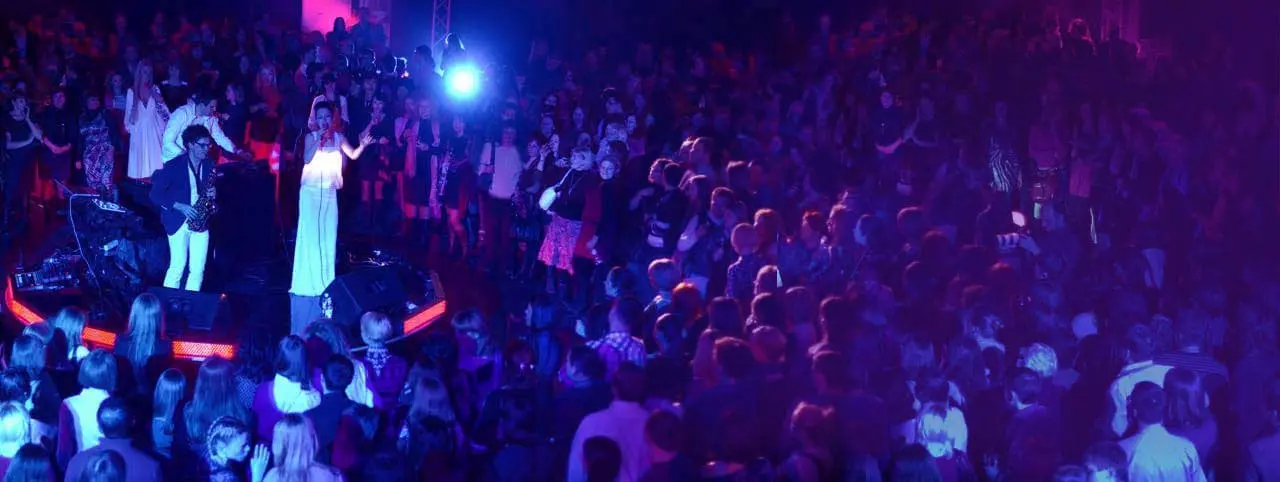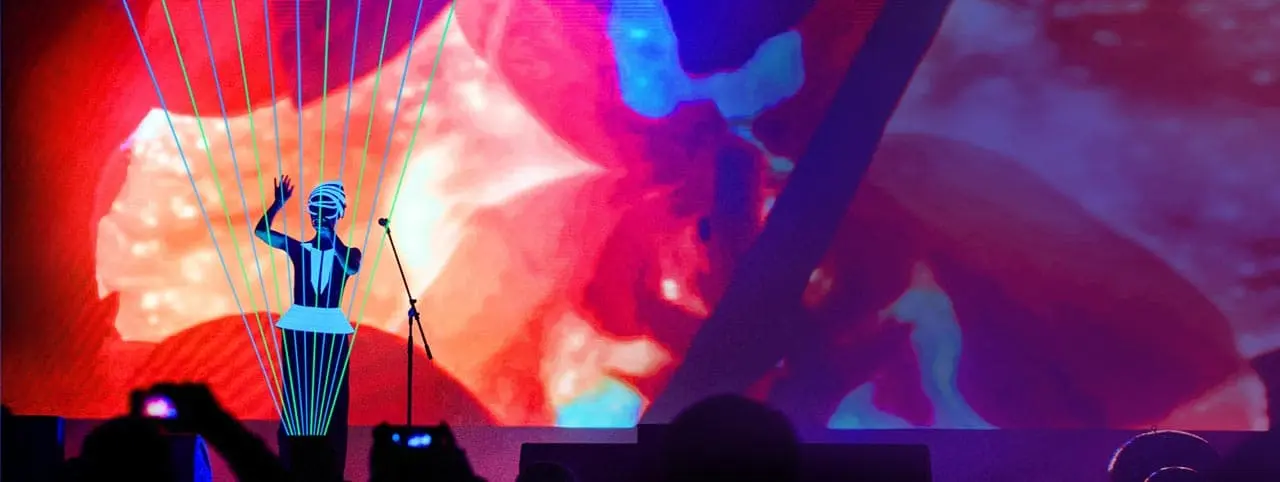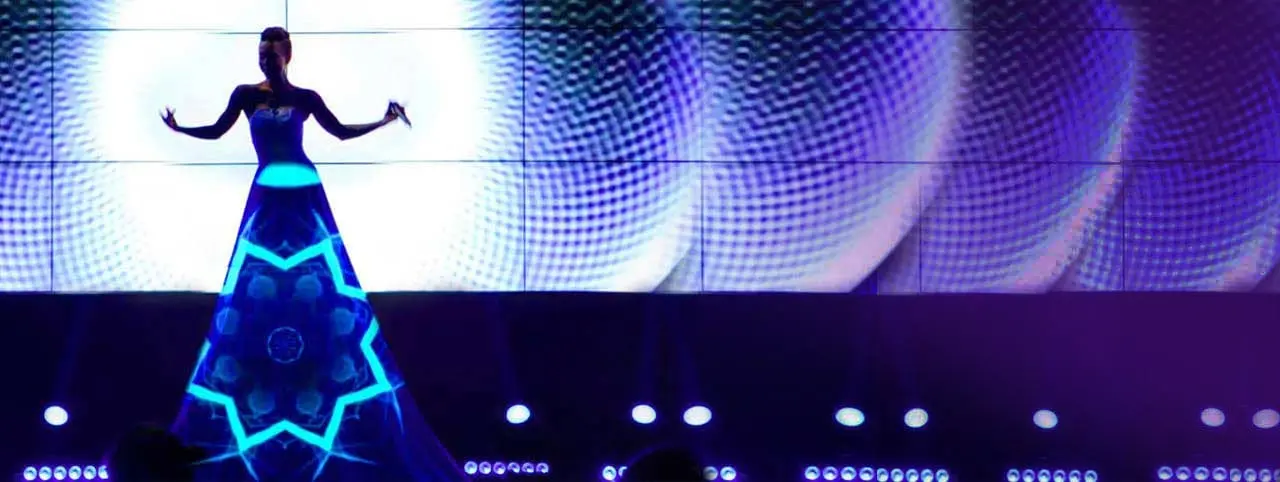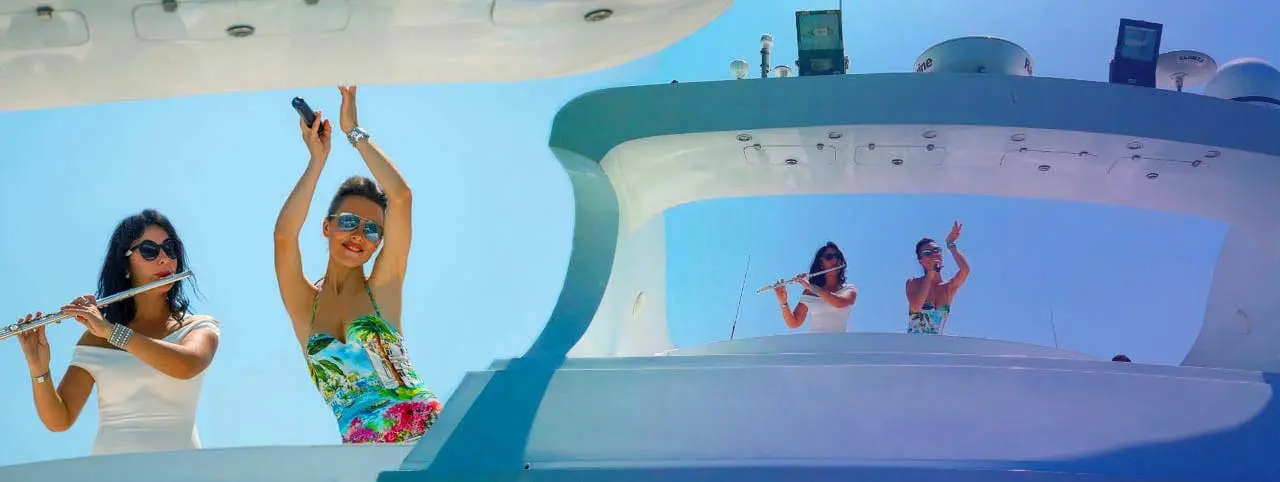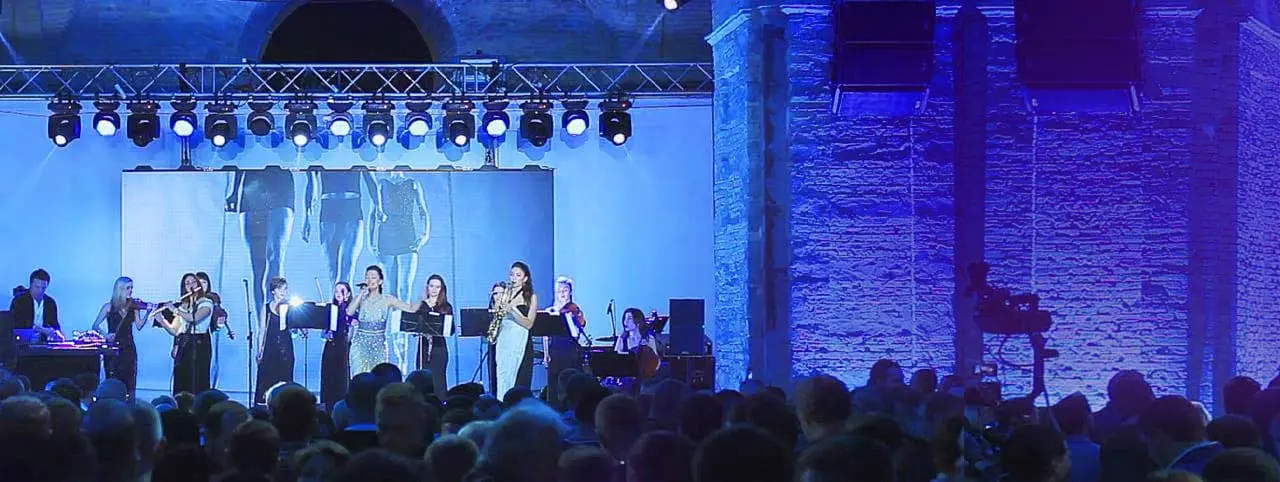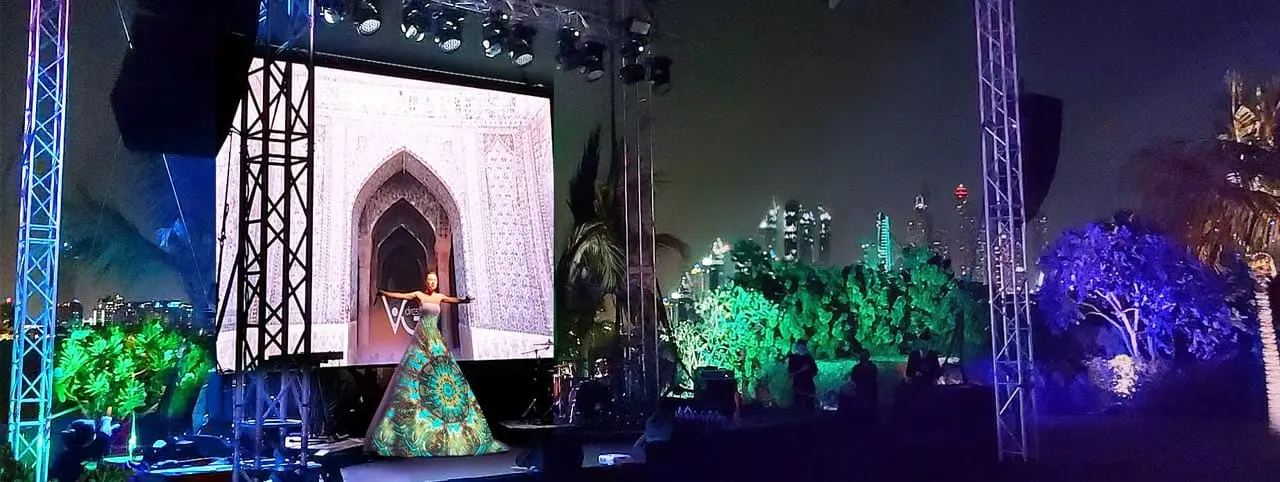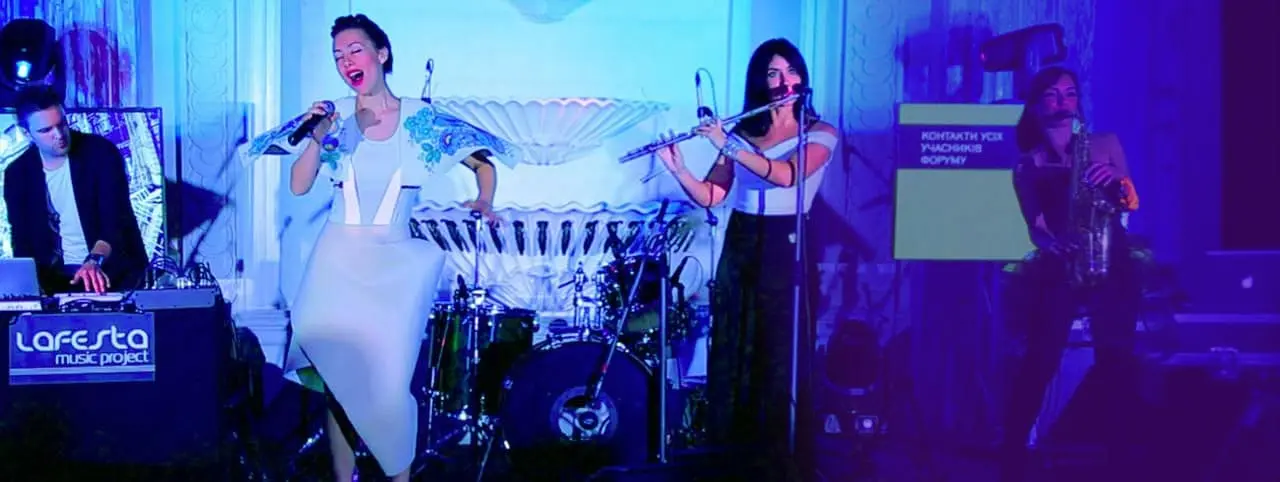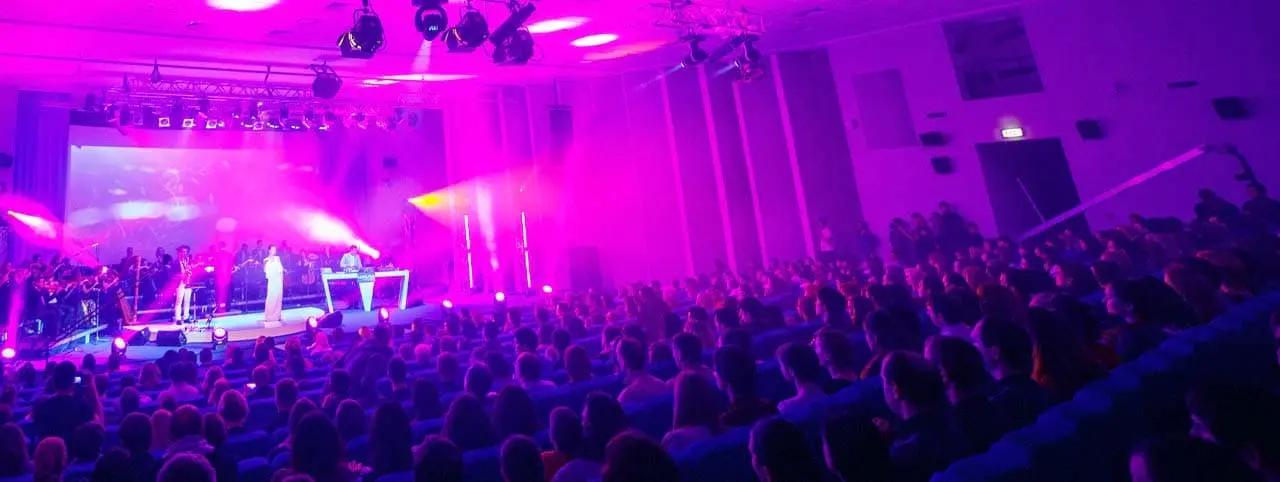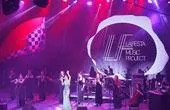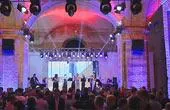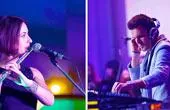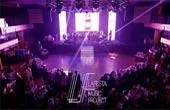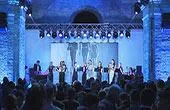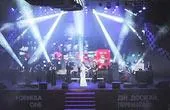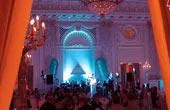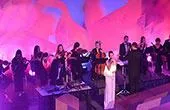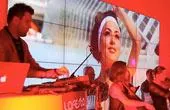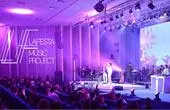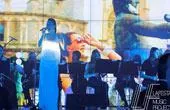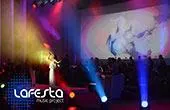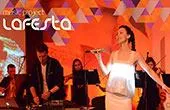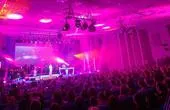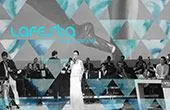Contemporary opera and classical crossover (stylish modern & pop opera)
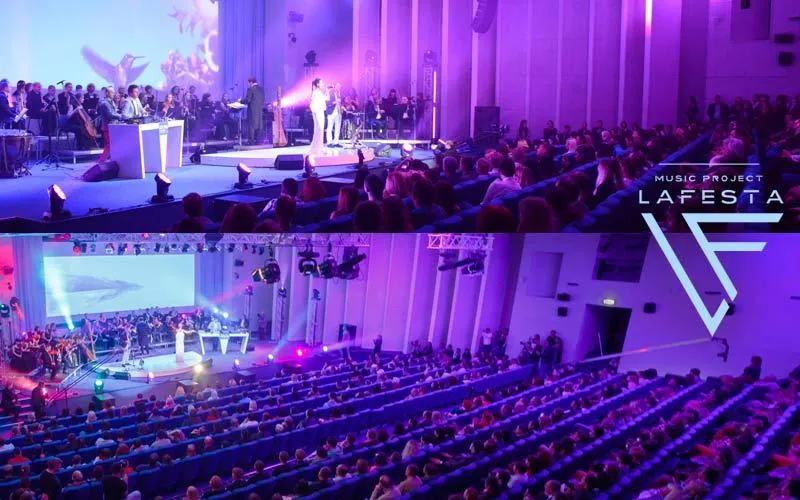
LAFESTA (Zurich, Switzerland) is a unique Ukrainian musical project performing in the style of modern electronic lounge opera. This original 60-minute author's program combines the amazing opera voice of soloist Olha Rossi, stylish modern opera, luminous dresses, original video content for the screen and other shows: laser harp show and 3D dress show.
The concert program includes a harmonious mix of different styles of music (classical crossover, popera, electronic & ethnic music), which create an original sound and a special atmosphere in each song.
Contemporary opera & modern opera (fragments of various LAFESTA`s concerts) Music Style: Classical Crossover, Pop Opera, Jazz-Lounge Opera, Electro Opera.
The performance with the "Lounge Opera" program can be in various formats:
1) The main composition of the LAFESTA (3-4 people: opera singer, DJ with electro-percussion, flutist, accordionist or saxophonist). This line-up can perform at remote locations (home concerts, halls, restaurants, hotels), or at music festivals or gala events.
2) LAFESTA (trio) plus 1 or 2 of our shows: live performance with the laser harp and the 3D projection dress. Such a unique format of modern opera will make both a small event and a theatrical concert unforgettable.
3) LAFESTA accompanied by a lounge orchestra (9-25 musicians), supplemented by a laser harp show, 3D dresses and modern ballet. This is a full-fledged opera show (45-90 minutes). Performance is possible with any other professional orchestra, as we have the necessary sheet music/scores.
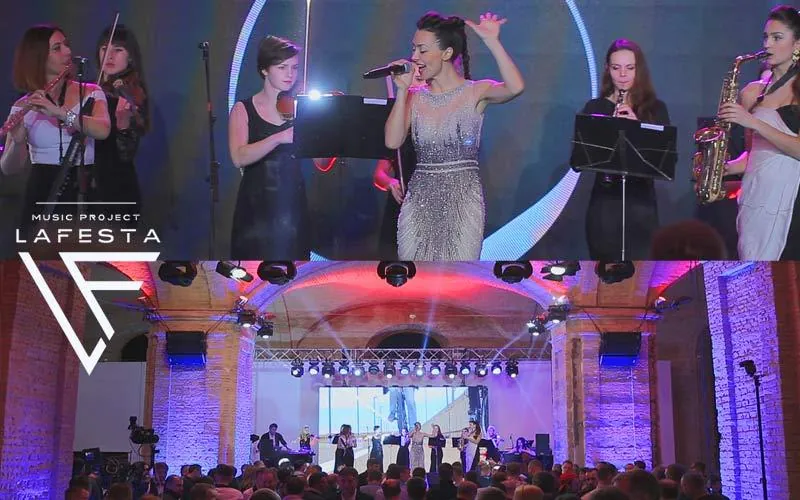
If the aim of your opera concert or event is to pleasantly surprise the audience, then our "Modern Lounge Opera" will adorn the program of a gala dinner, theatre concert, presentation and wedding. It is ideal for such stylistic corporate parties and parties as Phantom of the Opera, 5th Element, Space and Science, Hi-tech and the Future. Songs from this program were used as soundtracks for several TV shows: "Genteel Life", "HD Fashion TV", and "Madrid Fashion Week".
The soloist of LAFESTA music project (Olga Rossi) is the author of the texts and vocal parts of our "Lounge Opera" program. Her crystal operatic voice (lyric soprano) is heard in all songs. Olga graduated with honours from the National Music Academy of Ukraine and has a higher academic vocal education. She sang the main roles in such famous operas as: "Iolanthe", "The Marriage of Figaro", "La Boheme" and became the laureate of 6 vocal competitions.
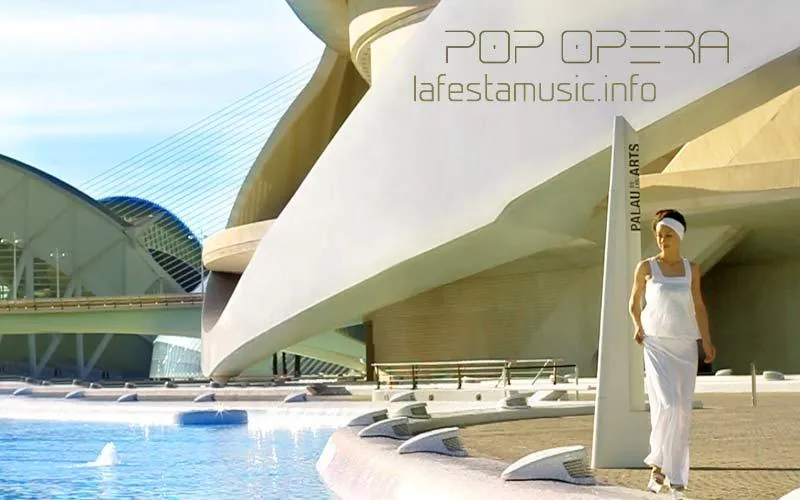
In 2011, LAFESTA made the world's first music video in the style of a lounge opera ("Electro Opera"). Filming took place in Valencia (City of Arts and Sciences "La ciudad de las Artes y las Ciencias"). Subsequently, 2 more clips were shot in the original genre of electronic opera and deep-house: in London (“City Jungle”) and in Barcelona (“Easy”). All clips were rotated on the leading music TV channels: MTV, M1, and Star TV.
Every person who truly loves classical music or contemporary opera has already heard string quartets, pianists and classical singers perform many times. But the opera diva who plays modern opera on laser harp or sings charming vocal parts in a 3D dress will mark a vivid impression for a lifetime.
You can book the original show and the opera singer for your theatre, hotel, restaurant or private event.
LAFESTA concert with symphony orchestra Contemporary opera: classical crossover, modern opera, pop opera, jazz opera.
History of modern opera, pop opera and classic crossover
Along with the development of musical culture, the need for a modern direction of opera music has also grown. More and more theatres are opening around the world that specializes in organizing concerts of pop opera, modern opera and even club electronic opera.
The world's largest opera houses are trying to increase revenue by making the classics more in demand. In recent decades, many theatres have become customers and directors of modern opera, and admirers of classical art are planning trips
to opera festivals, premieres and modern opera performances a year ahead. This suggests that the classic crossover has taken its musical niche and is loved by the sophisticated public.
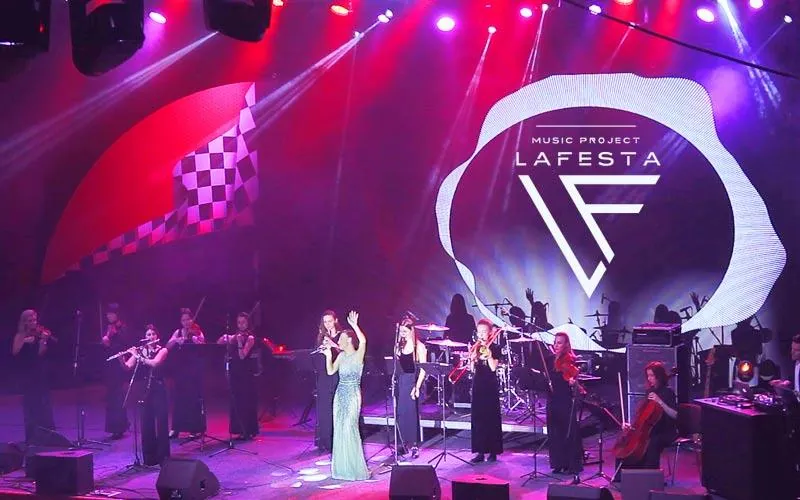
Classical crossover is a musical style that connects different styles of opera. It was officially formed relatively recently but has already become so popular that it entered the list of "Grammy" music award nominations and took a separate chart in the Billboard hit parade.
This genre of modern opera combines operatic vocals, and elements of classical music with modern trends in electronic, lounge and pop music. Sometimes the name "pop opera" or "modern opera" is used to refer to this style.
Ever since its inception (in 1590), the opera has been constantly changing and modernizing. Along with the big, serious opera (seria opera), a comic opera (buffa opera) arose, which later turned into an operetta and musicals. And since the end of the 19th and the entire 20th century, modern opera and classical crossover have gone from experimenting with electronic sound and changing the manner of opera singing to worldwide recognition. However, almost all innovators had a misunderstanding of their contemporaries. The composer Prokofiev shouted out during his concerts that a cat plays such music while walking on the piano. But composers and musicians continued to search for a new sound in music, which was invariably taken over by opera.
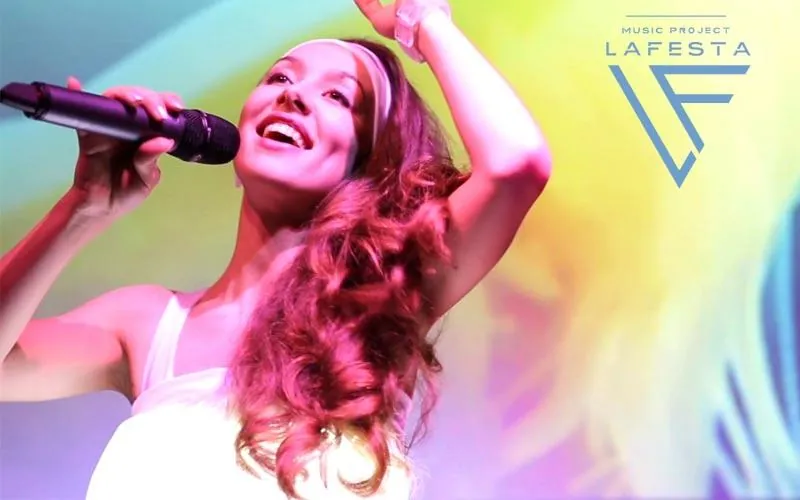
Back in 1753, the first ever electric musical instrument, the "Golden Dionysus" (Denis d'or), was constructed. It was created by Václav Divis (a Czech inventor and admirer of operatic music). The instrument consisted of a box with a keyboard (14 registers), a pedal and 790 strings with a system of various tensions. This allowed the Golden Dionysus to imitate the sounds of the harp, harpsichord, lute, and even several wind musical instruments. But the listeners were amazed by the sound quality, which was achieved by the electrification of metal strings. After the death of the scientist, this unique electric instrument was purchased and transported to Vienna by another admirer of opera art.
In the second half of the 19th century, a number of musical instruments appeared that influenced the development of today's opera music: 1860 - "Helmholtz Resonator" (the progenitor of electronic rhythms); 1867 - "Electro-mechanical piano" (changed musical tones); 1876 - "Musical Telegraph" (synthesized new sounds); 1897 - "Telharmonium" (the first full-fledged polyphonic electronic instrument that could transmit sound over the telephone network to any subscriber).
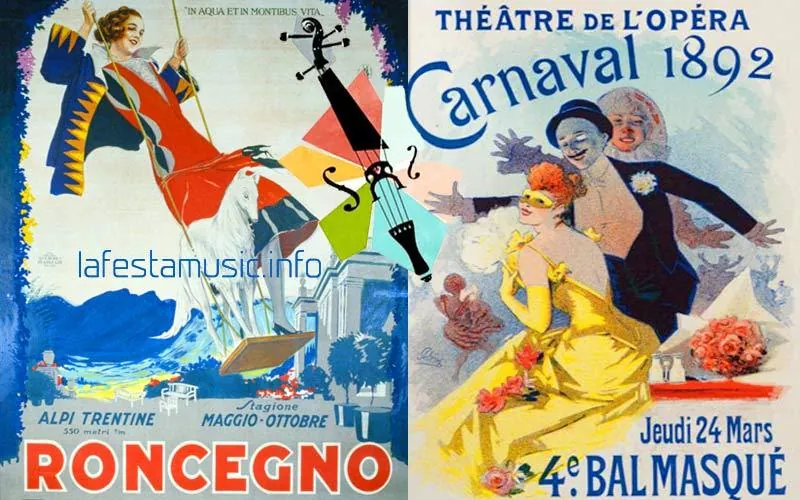
However, the changes in the opera affected not only the integration of electronic and urban sounds but also the sound of the symphony orchestra. Non-standard rhythms, structures and sound extraction on academic instruments began to be used. Typical examples: the atonal opera "Wozzeck" by Alban Berg; the first ever 12-tone piece for orchestra by the composer Webern; piano dodecaphony by Schoenberg; microchromatics of the opera "The Mother" by Alois Huba. Some composers placed foreign objects (coins, paper, glass) between the strings of a violin, cello, or piano to create a lively surreal sound in modern opera. Sometimes musicians were added to the composition of the symphony orchestra, extracting sounds from various objects: sandpaper, a cardboard box, and a klaxon. Opera singers began to use recitative, muttering, coughing, moaning, and screaming. All these experiments, effects and minimalism influenced the subsequent development of electronic opera music.
Moving away from the usual classical rules, the futuristic opera of the future developed in parallel. The invention of magnetic tape brought modern opera to a new level. Now composers could create whole musical pictures in the recording studio,
cutting fragments of records, applying various effects to them and collecting unique opera music from this constructor.
New operas were supplemented with audio fragments and the sounds of the noise of cities, factories, and radios. For example, Stravinsky used one of the first machines to produce rhythmic noises in his concerts,
and Erik Satie integrated the hum of sirens, the clinking of glasses, the rumble of aeroplanes, and the sound of a typewriter into the score (ballet Parade, 1917).
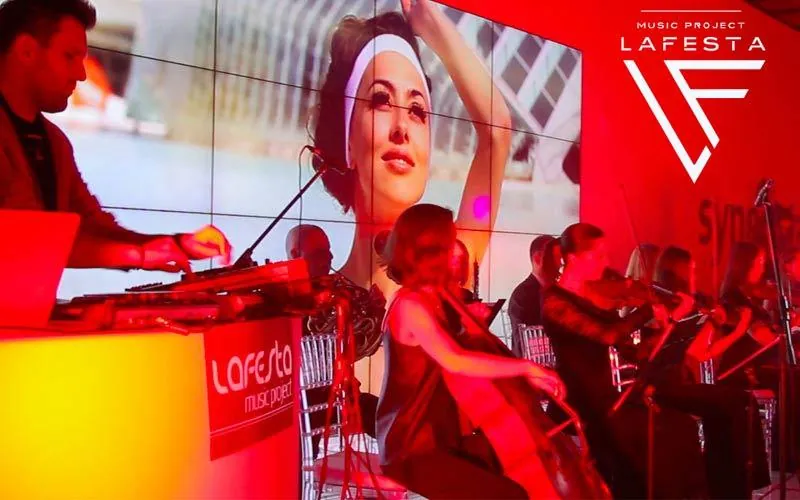
In the 1960s and 1980s, surrealistic and experimental opera music became in demand by the film industry, television and radio. Many operettas, musicals and pop operas have found a second wind thanks to musical films: Legrand's The Umbrellas of Cherbourg and Bernstein's West Side Story. Rock bands began to use fragments and melodies from classical music at their concerts. For example, Bon Jovi performed with Luciano Pavarotti, and Freddie Mercury sang with Montserrat Caballe.
The greatest popularization of the classic crossover is due to the trio of tenors: Placido Domingo, Luciano Pavarotti and Jose Carreras, who have been a joint project for 15 years. The trio debuted at the opening of the FIFA World Cup in Rome (1990),
demonstrating to all countries that opera singers are expanding the scope of academic music.
The end of the 90s enriched pop opera with an abundance of such singers and singers as: Andrea Bocelli, Sarah Brightman, Emma Shaplin, Alessandro Safina, Lara Fabian, Sissel Chirschebo, Il Divo and many others.
All of them perform in the style of classical crossover and neoclassical music, combining pop opera with relaxation music.
So Emma Shaplin combined Italian music of the Baroque era with electronic parts and arrangements in her commercially successful album "Carmine Meo". Although, she previously planned to give up operatic singing after an opera vocal teacher reproached her for using dance rhythm in one of the classical arias.
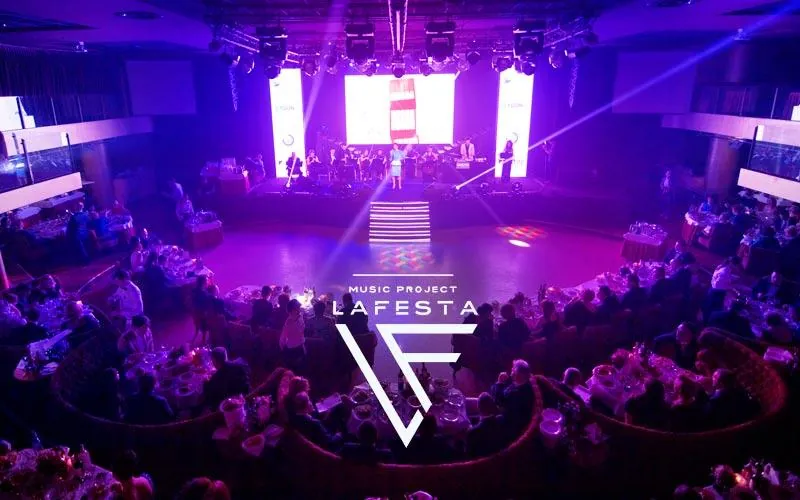
But the most striking examples of modern operatic sound turned out to be in cinema: 1) Plavalaguna's aria from the film "The Fifth Element" (based on the aria "Il dolce suono" from the opera "Lucia di Lammermoor" with the addition of synthetic vocals on high notes); 2) the film "The Phantom of the Opera".
Contemporary opera (along with electronic music) has also actively absorbed modern multimedia. Since the audience in the 21st century has clip thinking, theatre directors actively use video projection and visual effects in new opera productions to keep their attention. For example, the five-hour opera "Siegfried" (based on Wagner's music) uses 14 projectors and laser holography instead of scenery.
Fragments of performances by the opera singer in a 3D dress Style: classical crossover, modern opera, pop opera, jazz-lounge opera
Therefore, the legendary José Carreras had his own team of sound engineers on all tours, consisting of 10-12 people. This is done for several reasons: in some concert venues, even professional opera singers will not be able to perform without a microphone (stadium, open-air performance, hall with poor acoustics); if an opera singer performs accompanied by electronic instruments and sound portals. Also, any audio recording and television broadcast of an opera concert is impossible without competent sound recording by microphones. Thanks to sound equipment, modern opera is able to convey to the audience the full range of the singer's emotions and whispers or breathing will be heard in the last row of the concert hall.
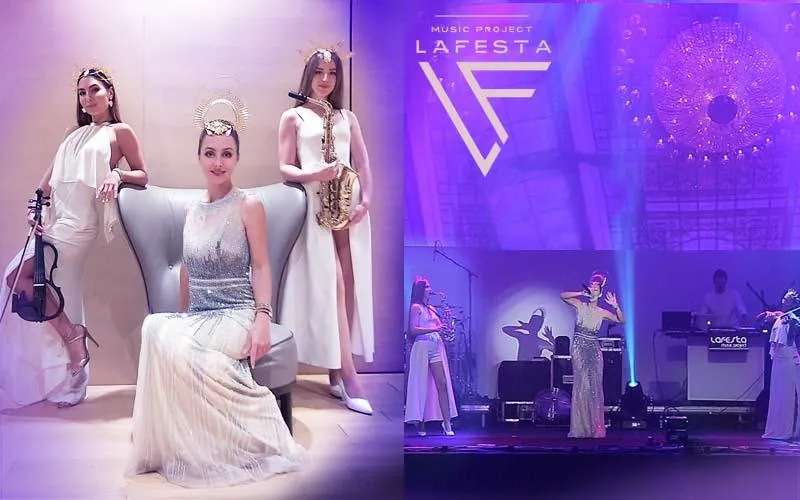
The melodies and scores of contemporary modern opera and pop opera have become a reflection of the changes that have taken place in our society and thinking. Globalism, wars, the sexual revolution, migration, social networks, and science fiction have left their mark on music. This has filled contemporary opera with millions of new atmospheric sounds. If we compare the scores of the 17th century with modern ones (stained with such combinations of notes that we could not have imagined before), it turned out that in modern opera music, the whole world can be described with musical signs: barking dogs, subway noise, wind, mobile phone ringing. In this sense, the new opera has become more complex.
And if you do not rely on the opinion of musical theorists and conductors, then ordinary people will be able to sing and recall from the works of Mozart, Verdi, Tchaikovsky also only well-known "pop" melodies: "The Wedding of Figaro", "The Barber of Seville", "La Traviata", "The Nutcracker".
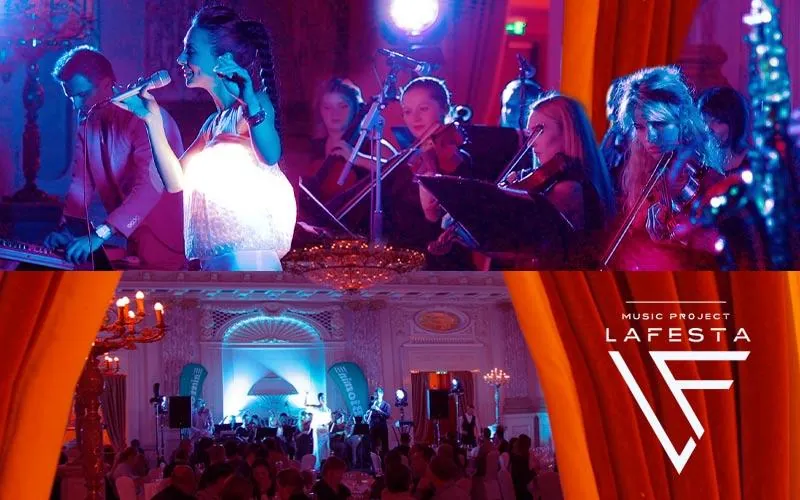
However, one of the key components of the success of contemporary opera is musical management. For example, the Carnegie Mellon Theater in Pittsburgh immediately increased the sale of expensive tickets with the help
of costumed delivery of tickets to customers' homes. The Cincinnati Opera House went even further, doubling the attendance of its romantic opera by spraying perfume in the hall.
In Berlin, opera singers created the "Home Opera" - the opportunity to order an opera performance at home (if 40 spectators are recruited). It's much more comfortable and half the price of the opera house.
But the most beautiful thing about a home concert is that it gives a feeling of complete presence because musicians and opera singers appear from the next room and perform a few meters from the audience.
LAFESTA music project performs in several styles of modern opera: pop opera, lounge opera, and electronic modern opera). The list of songs and the show format are discussed with the customer or concert.
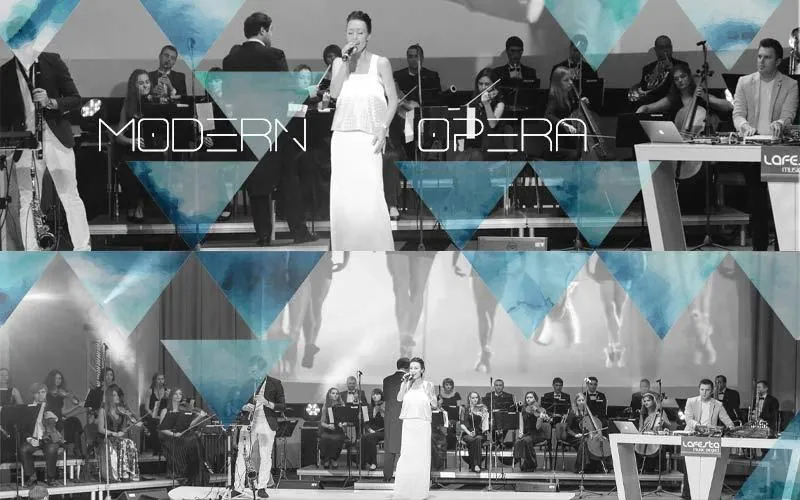
Photos performance of LAFESTA with the orchestra at events
